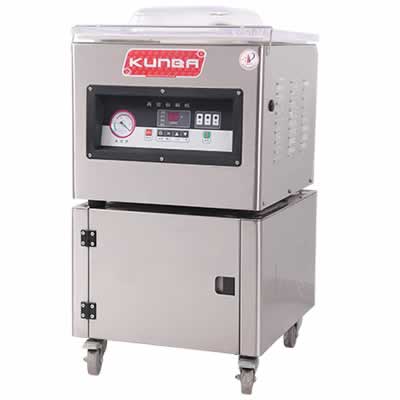
If liquid gets into the vacuum sealing machine, it may damage the machine and affect its function.
1. The sealing mechanism is damaged
Vacuum sealers typically have a heating element or sealing strip that melts and seals the bag.
If liquid comes into contact with this hot surface, it may cause the liquid to boil or splatter, causing damage to the sealing mechanism. This may cause the seal to fail or prevent the machine from sealing completely.
2. Vacuum pump failure
The vacuum pump in the vacuum sealer exists to remove the air from the bag, if any liquid gets into the pump it can damage the mechanism and hinder its ability to create a vacuum. This may result in reduced suction power or complete failure of the vacuum function.
3. Pollution and Sanitation Issues
Bacterial growth and contamination may result, which may pose a health risk to future use, especially if not thoroughly cleaned and sanitized.
4. Low sealing efficiency
Liquid inside the bag can interfere with the sealing process of the vacuum packaging machine, can prevent the bag from closing properly or cause the seal to leak, compromising airtightness. This can cause freezer burn, moisture retention, or spoilage of sealed contents.
To prevent liquids from entering the vacuum sealer, it is important to ensure that the vacuum-sealed items have no excess liquid or moisture.
To prevent liquids from entering your vacuum sealing machine, there are a number of precautions you can take to minimize the risk of liquids entering the machine:
1. Use specially sealed liquid containers
If you're going to be sealing liquids, choose containers that are specifically designed to be vacuum-tight, with tight-fitting lids that provide extra airtight protection against leaks or spills.
2. Partial freezing
Items with a high liquid content, such as soups or sauces, can be partially frozen before vacuum sealing.
Freezing the liquid will freeze them, reducing the risk of leaks or spills during the sealing process.
3. Reserve space
When sealing liquids, make sure there is enough room at the top of the bag or container to prevent the liquid from expanding when frozen or sealed, and spilling and being sucked into the vacuum sealer.
4. Use absorbent material
Absorbent material, such as paper towels or napkins, can be placed between the liquid and the sealing area to help absorb excess liquid that may spill during the sealing process.
5. Keep the sealing area clean and dry
Make sure that the sealing area of the vacuum packaging machine is clean and dry without any liquid before performing the sealing operation.
6. Vacuum strength starts from low
If your vacuum sealer allows you to adjust the vacuum strength, choose to start with a lower or gentler setting when sealing liquids. This helps prevent the vacuum from being too strong, which can cause liquids to splash or leak.
Taking the above precautions can significantly reduce the risk of liquids entering the vacuum sealer and help ensure the longevity and proper function of the vacuum sealer.

GET A QUOTE